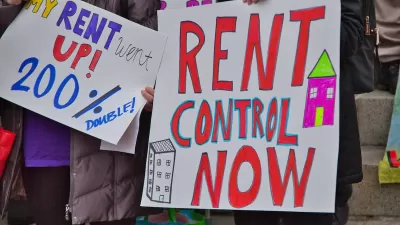The rent increases, which the Rent Guidelines Board deemed necessary to support “mom and pop” landlords, will affect two million residents.

“A New York City panel that regulates the rents for roughly one million rent-stabilized apartments approved the highest increases in almost a decade on Tuesday, after property owners said they were being pinched by taxes and rising expenses.” As reported by Mihir Zaveri in The New York Times, the Rent Guidelines Board voted to raise rents by 3.25 percent for one-year leases and 5 percent for two-year leases, affecting around two million New Yorkers. According to a separate article in Bloomberg, only 23 percent of New York residents can currently afford the city’s median rent.
“At the panel’s public hearing last week in the Bronx, more than 60 of roughly 70 speakers were tenants, tenant advocates and elected officials who argued for a rent decrease or a rent freeze.” Meanwhile, landlords say they need even higher rent increases to stay in business and make needed upgrades to buildings.
Defending the panel’s decision, Mayor Eric Adams, in a statement, said “small landlords are at risk of bankruptcy because of years of no increases at all, putting building owners of modest means at risk while threatening the quality of life for tenants who deserve to live in well-maintained, modern buildings.” Zaveri points out that while Mayor Adams and landlord groups highlight the plight of “mom and pop” landlords, “more than 60 percent of rent-stabilized homes are owned by landlords with portfolios of more than 1,000 units overall.”
FULL STORY: Rents Will Rise by at Least 3.25 Percent for 2 Million New Yorkers

Planetizen Federal Action Tracker
A weekly monitor of how Trump’s orders and actions are impacting planners and planning in America.

Chicago’s Ghost Rails
Just beneath the surface of the modern city lie the remnants of its expansive early 20th-century streetcar system.

San Antonio and Austin are Fusing Into one Massive Megaregion
The region spanning the two central Texas cities is growing fast, posing challenges for local infrastructure and water supplies.

Since Zion's Shuttles Went Electric “The Smog is Gone”
Visitors to Zion National Park can enjoy the canyon via the nation’s first fully electric park shuttle system.

Trump Distributing DOT Safety Funds at 1/10 Rate of Biden
Funds for Safe Streets and other transportation safety and equity programs are being held up by administrative reviews and conflicts with the Trump administration’s priorities.

German Cities Subsidize Taxis for Women Amid Wave of Violence
Free or low-cost taxi rides can help women navigate cities more safely, but critics say the programs don't address the root causes of violence against women.
Urban Design for Planners 1: Software Tools
This six-course series explores essential urban design concepts using open source software and equips planners with the tools they need to participate fully in the urban design process.
Planning for Universal Design
Learn the tools for implementing Universal Design in planning regulations.
planning NEXT
Appalachian Highlands Housing Partners
Mpact (founded as Rail~Volution)
City of Camden Redevelopment Agency
City of Astoria
City of Portland
City of Laramie





























